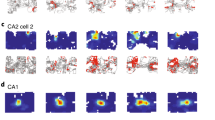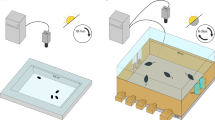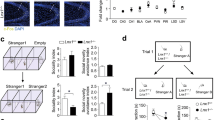Abstract
Although the physical and mental benefits of friendships are clear, the neurobiological mechanisms driving mutual social preferences are not well understood. Studies in humans suggest friends are more genetically similar, particularly for targets within the 3′,5′-cyclic adenosine monophosphate (cAMP) cascade. Unfortunately, human studies can not provide conclusive evidence for such a biological driver of friendship given that other genetically related factors tend to co-segregate with friendship (e.g., geographical proximity). As such, here we use mice under controlled conditions to test the hypothesis that homophily in the cAMP-degrading enzyme phosphodiesterase 11A4 (PDE11A4) can dictate mutual social preference. Using C57BL/6J and BALB/cJ mice in two different behavioral assays, we showed that mice with two intact alleles of Pde11a prefer to interact with Pde11 wild-type (WT) mice of the same genetic background over knockout (KO) mice or novel objects; whereas, Pde11 KO mice prefer to interact with Pde11 KO mice over WT mice or novel objects. This mutual social preference was seen in both adult and adolescent mice, and social preference could be eliminated or artificially elicited by strengthening or weakening PDE11A homodimerization, respectively. Stereotactic delivery of an isolated PDE11A GAF-B domain to the mouse hippocampus revealed the membrane-associated pool of PDE11A-cAMP-CREB signaling specifically within the CA1 subfield of hippocampus is most critical for regulating social preference. Our study here not only identifies PDE11A homophily as a key driver of mutual social preference across the lifespan, it offers a paradigm in which other mechanisms can be identified in a controlled fashion.
This is a preview of subscription content, access via your institution
Access options
Subscribe to this journal
Receive 12 print issues and online access
$259.00 per year
only $21.58 per issue
Buy this article
- Purchase on Springer Link
- Instant access to full article PDF
Prices may be subject to local taxes which are calculated during checkout





Similar content being viewed by others
References
Adams RG, Blieszner R, de Vries B. Definitions of friendship in the third age: age, gender, and study location effects. J Aging Stud. 2000;14:117–33.
Eng PM, Rimm EB, Fitzmaurice G, Kawachi I. Social ties and change in social ties in relation to subsequent total and cause-specific mortality and coronary heart disease incidence in men. Am J Epidemiol. 2002;155:700–9.
Tan J, Wang Y. Social integration, social support, and all-cause, cardiovascular disease and cause-specific mortality: a prospective cohort study. Int J Environ Res Public Health. 2019;16:1498.
Holt-Lunstad J, Smith TB, Layton JB. Social relationships and mortality risk: a meta-analytic review. PLoS Med. 2010;7:e1000316.
Hikichi H, Kondo K, Takeda T, Kawachi I. Social interaction and cognitive decline: results of a 7-year community intervention. Alzheimers Dement. 2017;3:23–32.
Bassuk SS, Glass TA, Berkman LF. Social disengagement and incident cognitive decline in community-dwelling elderly persons. Ann Intern Med. 1999;131:165–73.
Seeman TE, Miller-Martinez DM, Stein Merkin S, Lachman ME, Tun PA, Karlamangla AS. Histories of social engagement and adult cognition: midlife in the U.S. study. J Gerontol B Psychol Sci Soc Sci. 2011;66:i141–52.
Abraído-Lanza AF. Social support and psychological adjustment among Latinas with arthritis: a test of a theoretical model. Ann Behav Med. 2004;27:162–71.
Coty MB, Wallston KA. Problematic social support, family functioning, and subjective well-being in women with rheumatoid arthritis. Women Health. 2010;50:53–70.
Cheng Y, Liu C, Mao C, Qian J, Liu K, Ke G. Social support plays a role in depression in Parkinson’s disease: a cross-section study in a Chinese cohort. Parkinsonism Relat Disord. 2008;14:43–5.
Suurmeijer TPBM, Sonderen FLPV, Krol B, Doeglas DM, Heuvel WJAVD, Sanderman R. The relationship between personality, supportive transactions and support satisfaction, and mental health of patients with early rheumatoid arthritis. Results from the Dutch part of the Euridiss study. Soc Indic Res. 2005;73:179–97.
Jensen MP, Smith AE, Bombardier CH, Yorkston KM, Miró J, Molton IR. Social support, depression, and physical disability: age and diagnostic group effects. Disabil Health J. 2014;7:164–72.
Gay MC, Vrignaud P, Garitte C, Meunier C. Predictors of depression in multiple sclerosis patients. Acta Neurol Scand. 2010;121:161–70.
Christakis NA, Fowler JH. Friendship and natural selection. Proc Natl Acad Sci USA. 2014;111:10796–801.
Fowler JH, Settle JE, Christakis NA. Correlated genotypes in friendship networks. Proc Natl Acad Sci USA. 2011;108:1993–7.
Boardman JD, Domingue BW, Fletcher JM. How social and genetic factors predict friendship networks. Proc Natl Acad Sci USA. 2012;109:17377–81.
Cadogan AK, Kendall DA, Fink H, Marsden CA. Social interaction increases 5-HT release and cAMP efflux in the rat ventral hippocampus in vivo. Behav Pharm. 1994;5:299–305.
Sano H, Nagai Y, Miyakawa T, Shigemoto R, Yokoi M. Increased social interaction in mice deficient of the striatal medium spiny neuron-specific phosphodiesterase 10A2. J Neurochem. 2008;105:546–56.
Barrot M, Wallace DL, Bolaños CA, Graham DL, Perrotti LI, Neve RL, et al. Regulation of anxiety and initiation of sexual behavior by CREB in the nucleus accumbens. Proc Natl Acad Sci USA. 2005;102:8357–62.
Hegde S, Ji H, Oliver D, Patel NS, Poupore N, Shtutman M, et al. PDE11A regulates social behaviors and is a key mechanism by which social experience sculpts the brain. Neuroscience. 2016;335:151–69.
Srivastava DP, Jones KA, Woolfrey KM, Burgdorf J, Russell TA, Kalmbach A, et al. Social, communication, and cortical structural impairments in Epac2-deficient mice. J Neurosci: Off J Soc Neurosci. 2012;32:11864–78.
Yang Y, Shu X, Liu D, Shang Y, Wu Y, Pei L, et al. EPAC null mutation impairs learning and social interactions via aberrant regulation of miR-124 and Zif268 translation. Neuron. 2012;73:774–88.
Depoortère R, Bardin L, Varney MA, Newman-Tancredi A. Serotonin 5-HT1A receptor biased agonists display differential anxiolytic activity in a rat social interaction model. ACS Chem Neurosci. 2019;10:3101–7.
Preciado P, Snijders TA, Burk WJ, Stattin H, Kerr M. Does proximity matter? Distance dependence of adolescent friendships. Soc Netw. 2012;34:18–31.
Wang C, Zöllner S, Rosenberg NA. A quantitative comparison of the similarity between genes and geography in worldwide human populations. PLoS Genet. 2012;8:e1002886.
Manica A, Prugnolle F, Balloux F. Geography is a better determinant of human genetic differentiation than ethnicity. Hum Genet. 2005;118:366–71.
Seyfarth RM, Cheney DL. The evolutionary origins of friendship. Annu Rev Psychol. 2012;63:153–77.
Grauer SM, Pulito VL, Navarra RL, Kelly MP, Kelley C, Graf R, et al. Phosphodiesterase 10A inhibitor activity in preclinical models of the positive, cognitive, and negative symptoms of schizophrenia. J Pharmacol Exp therapeutics. 2009;331:574–90.
Kelly MP, Logue SF, Brennan J, Day JP, Lakkaraju S, Jiang L, et al. Phosphodiesterase 11A in brain is enriched in ventral hippocampus and deletion causes psychiatric disease-related phenotypes. Proc Natl Acad Sci USA. 2010;107:8457–62.
Enomoto T, Tatara A, Goda M, Nishizato Y, Nishigori K, Kitamura A, et al. A novel phosphodiesterase 1 inhibitor DSR-141562 exhibits efficacies in animal models for positive, negative, and cognitive symptoms associated with schizophrenia. J Pharmacol Exp Ther. 2019;371:692–702.
Hegde S, Capell WR, Ibrahim BA, Klett J, Patel NS, Sougiannis AT, et al. Phosphodiesterase 11A (PDE11A), enriched in ventral hippocampus neurons, is required for consolidation of social but not nonsocial memories in mice. Neuropsychopharmacology. 2016;41:2920–31.
Ishak WW, Kahloon M, Fakhry H. Oxytocin role in enhancing well-being: a literature review. J Affect Disord. 2011;130:1–9.
Wong ML, Whelan F, Deloukas P, Whittaker P, Delgado M, Cantor RM, et al. Phosphodiesterase genes are associated with susceptibility to major depression and antidepressant treatment response. Proc Natl Acad Sci USA. 2006;103:15124–9.
Luo HR, Wu GS, Dong C, Arcos-Burgos M, Ribeiro L, Licinio J, et al. Association of PDE11A global haplotype with major depression and antidepressant drug response. Neuropsychiatr Dis Treat. 2009;5:163–70.
Cabanero M, Laje G, Detera-Wadleigh S, McMahon FJ. Association study of phosphodiesterase genes in the sequenced treatment alternatives to relieve depression sample. Pharmacogenet Genom. 2009;19:235–8.
Pathak G, Agostino MJ, Bishara K, Capell WR, Fisher JL, Hegde S, et al. PDE11A negatively regulates lithium responsivity. Mol Psychiatry. 2017;22:1714–24.
Baillie GS, Tejeda GS, Kelly MP. Therapeutic targeting of 3’,5’-cyclic nucleotide phosphodiesterases: inhibition and beyond. Nat Rev Drug Discov. 2019;18:770–96.
Kelly MP. PDE11A. In: Choi S, editor. Encyclopedia of signaling molecules. Cham: Springer International Publishing; 2018. p. 3804–26.
Kelly MP, Adamowicz W, Bove S, Hartman AJ, Mariga A, Pathak G, et al. Select 3′,5′-cyclic nucleotide phosphodiesterases exhibit altered expression in the aged rodent brain. Cell Signal. 2014;26:383–97.
Pilarzyk K, Klett J, Pena EA, Porcher L, Smith AJ, Kelly MP. Loss of function of phosphodiesterase 11A4 shows that recent and remote long-term memories can be uncoupled. Curr Biol. 2019;29:2307–21 e2305.
Yuasa K, Kotera J, Fujishige K, Michibata H, Sasaki T, Omori K. Isolation and characterization of two novel phosphodiesterase PDE11A variants showing unique structure and tissue-specific expression. J Biol Chem. 2000;275:31469–79.
Weeks JL, Zoraghi R, Beasley A, Sekhar KR, Francis SH, Corbin JD. High biochemical selectivity of tadalafil, sildenafil and vardenafil for human phosphodiesterase 5A1 (PDE5) over PDE11A4 suggests the absence of PDE11A4 cross-reaction in patients. Int J Impot Res. 2005;17:5–9.
Farmer R, Burbano SD, Patel NS, Sarmiento A, Smith AJ, Kelly MP. Phosphodiesterases PDE2A and PDE10A both change mRNA expression in the human brain with age, but only PDE2A changes in a region-specific manner with psychiatric disease. Cell Signal. 2020;70:109592.
Patel NS, Klett J, Pilarzyk K, Lee DI, Kass D, Menniti FS, et al. Identification of new PDE9A isoforms and how their expression and subcellular compartmentalization in the brain change across the life span. Neurobiol Aging. 2018;65:217–34.
Kelly MP. Putting together the pieces of phosphodiesterase distribution patterns in the brain: a jigsaw puzzle of cyclic nucleotide regulation. In: Brandon NJ, West AR, editors. Cyclic nucleotide phosphodiesterases in the central nervous system: from biology to disease. New Jersey: John Wiley & Sons, Inc; 2014. p. 47–58.
Kelly MP. Cyclic nucleotide signaling changes associated with normal aging and age-related diseases of the brain. Cell Signal. 2018;42:281–91.
Lakics V, Karran EH, Boess FG. Quantitative comparison of phosphodiesterase mRNA distribution in human brain and peripheral tissues. Neuropharmacology. 2010;59:367–74.
Cheng Y, Wang ZM, Tan W, Wang X, Li Y, Bai B, et al. Partial loss of psychiatric risk gene Mir137 in mice causes repetitive behavior and impairs sociability and learning via increased Pde10a. Nat Neurosci. 2018;21:1689–703.
Maurin T, Melancia F, Jarjat M, Castro L, Costa L, Delhaye S, et al. Involvement of phosphodiesterase 2A activity in the pathophysiology of fragile X syndrome. Cereb Cortex. 2019;29:3241–52.
Alexander MS, Gasperini MJ, Tsai PT, Gibbs DE, Spinazzola JM, Marshall JL, et al. Reversal of neurobehavioral social deficits in dystrophic mice using inhibitors of phosphodiesterases PDE5A and PDE9A. Transl Psychiatry. 2016;6:e901.
Gurney ME, Cogram P, Deacon RM, Rex C, Tranfaglia M. Multiple behavior phenotypes of the fragile-X syndrome mouse model respond to chronic inhibition of phosphodiesterase-4D (PDE4D). Sci Rep. 2017;7:14653.
Pilarzyk K, Kelly MP. The role of PDE11A4 in isolation-induced neuroinflammation and social deficits. Soc Neurosci Meet Plan. 2017;258:221.
Baerveldt C, Van de Bunt GG, Vermande MM. Selection patterns, gender and friendship aim in classroom networks. Z für Erziehungswissenschaft. 2014;17:171–88.
Mjaavatn PE, Frostad P, Pijl SJ. Adolescents: Differences in friendship patterns related to gender. Issues in Educational Research 2016;26:45–64.
Curry O, Dunbar RI. Do birds of a feather flock together? The relationship between similarity and altruism in social networks. Hum Nat. 2013;24:336–47.
Kendler KS, Heath AC, Neale MC, Kessler RC, Eaves LJ. A population-based twin study of alcoholism in women. JAMA. 1992;268:1877–82.
Heath AC, Bucholz KK, Madden PAF, Dinwiddie SH, Slutske WS, Bierut LJ, et al. Genetic and environmental contributions to alcohol dependence risk in a national twin sample: consistency of findings in women and men. Psychological Med. 1997;27:1381–96.
Mohr CD, Averna S, Kenny DA, Del Boca FK. “Getting by (or getting high) with a little help from my friends”: an examination of adult alcoholics’ friendships. J Stud Alcohol. 2001;62:637–45.
Scattoni ML, McFarlane HG, Zhodzishsky V, Caldwell HK, Young WS, Ricceri L, et al. Reduced ultrasonic vocalizations in vasopressin 1b knockout mice. Behav Brain Res. 2008;187:371–8.
Binder MS, Lugo JN. NS-Pten knockout mice show sex- and age-specific differences in ultrasonic vocalizations. Brain Behav. 2017;7:e00857.
Brodkin ES. BALB/c mice: low sociability and other phenotypes that may be relevant to autism. Behav Brain Res. 2007;176:53–65.
Brodkin ES, Hagemann A, Nemetski SM, Silver LM. Social approach-avoidance behavior of inbred mouse strains towards DBA/2 mice. Brain Res. 2004;1002:151–7.
Fairless AH, Dow HC, Kreibich AS, Torre M, Kuruvilla M, Gordon E, et al. Sociability and brain development in BALB/cJ and C57BL/6J mice. Behav Brain Res. 2012;228:299–310.
Sankoorikal GM, Kaercher KA, Boon CJ, Lee JK, Brodkin ES. A mouse model system for genetic analysis of sociability: C57BL/6J versus BALB/cJ inbred mouse strains. Biol Psychiatry. 2006;59:415–23.
Avgustinovich DF, Lipina TV, Bondar NP, Alekseyenko OV, Kudryavtseva NN. Features of the genetically defined anxiety in mice. Behav Genet. 2000;30:101–9.
Horvath AO, Del RAC, Flückiger C, Symonds D. Alliance in individual psychotherapy. Psychotherapy. 2011;48:9.
Hall AM, Ferreira PH, Maher CG, Latimer J, Ferreira ML. The influence of the therapist-patient relationship on treatment outcome in physical rehabilitation: a systematic review. Phys Ther. 2010;90:1099–110.
Sbarra DA, Law RW, Portley RM. Divorce and death: a meta-analysis and research agenda for clinical, social, and health psychology. Perspect Psychological Sci. 2011;6:454–74.
Shor E, Roelfs DJ, Bugyi P, Schwartz JE. Meta-analysis of marital dissolution and mortality: reevaluating the intersection of gender and age. Soc Sci Med. 2012;75:46–59.
Goisis A, Özcan B, Van Kerm P. Do children carry the weight of divorce? Demography. 2019;56:785–811.
Amato PR. Children of divorce in the 1990s: an update of the Amato and Keith (1991) meta-analysis. J Fam Psychol. 2001;15:355–70.
Mier D, Kirsch P. Social-cognitive deficits in schizophrenia. In: Wöhr M, Krach S, editors. Social behavior from rodents to humans: neural foundations and clinical implications. Cham: Springer International Publishing; 2017. p. 397–409.
Volkmar FR. Understanding the social brain in autism. Dev Psychobiol. 2011;53:428–34.
Solomon Z. PTSD and social functioning. Soc Psychiatry Psychiatr Epidemiol. 1989;24:127–33.
Zegeye MM, Lindkvist M, Falker K, Kumawat AK, Paramel G, Grenegard M, et al. Activation of the JAK/STAT3 and PI3K/AKT pathways are crucial for IL-6 trans-signaling-mediated pro-inflammatory response in human vascular endothelial cells. Cell Commun Signal. 2018;16:55.
Acknowledgements
The authors would like to thank Dr. Marco Venniro for helpful editorial feedback on the manuscript. This work was funded by start-up funds from the University of Maryland School of Medicine, a grant from NIMH (R01MH101130), and a grant from NIA (R01AG061200, all awards to MPK). The content of this manuscript is solely the responsibility of the authors and does not necessarily represent the official views of the National Institutes of Health.
Author information
Authors and Affiliations
Contributions
Conceptualization: MPK; Methodology: AJS, KP, LP, and MPK; Validation: AJS, LP, and KP; Formal analysis: RF, LP, and MPK; Investigation: AJS, RF, KP, and LP; Writing: AJS, RF, KP, LP, and MPK; Visualization: AJS and MPK; Supervision, project administration, and funding acquisition: MPK.
Corresponding author
Ethics declarations
Competing interests
The authors declare no competing interests.
Additional information
Publisher’s note Springer Nature remains neutral with regard to jurisdictional claims in published maps and institutional affiliations.
Supplementary information
Rights and permissions
About this article
Cite this article
Smith, A.J., Farmer, R., Pilarzyk, K. et al. A genetic basis for friendship? Homophily for membrane-associated PDE11A-cAMP-CREB signaling in CA1 of hippocampus dictates mutual social preference in male and female mice. Mol Psychiatry 26, 7107–7117 (2021). https://doi.org/10.1038/s41380-021-01237-4
Received:
Revised:
Accepted:
Published:
Issue Date:
DOI: https://doi.org/10.1038/s41380-021-01237-4



